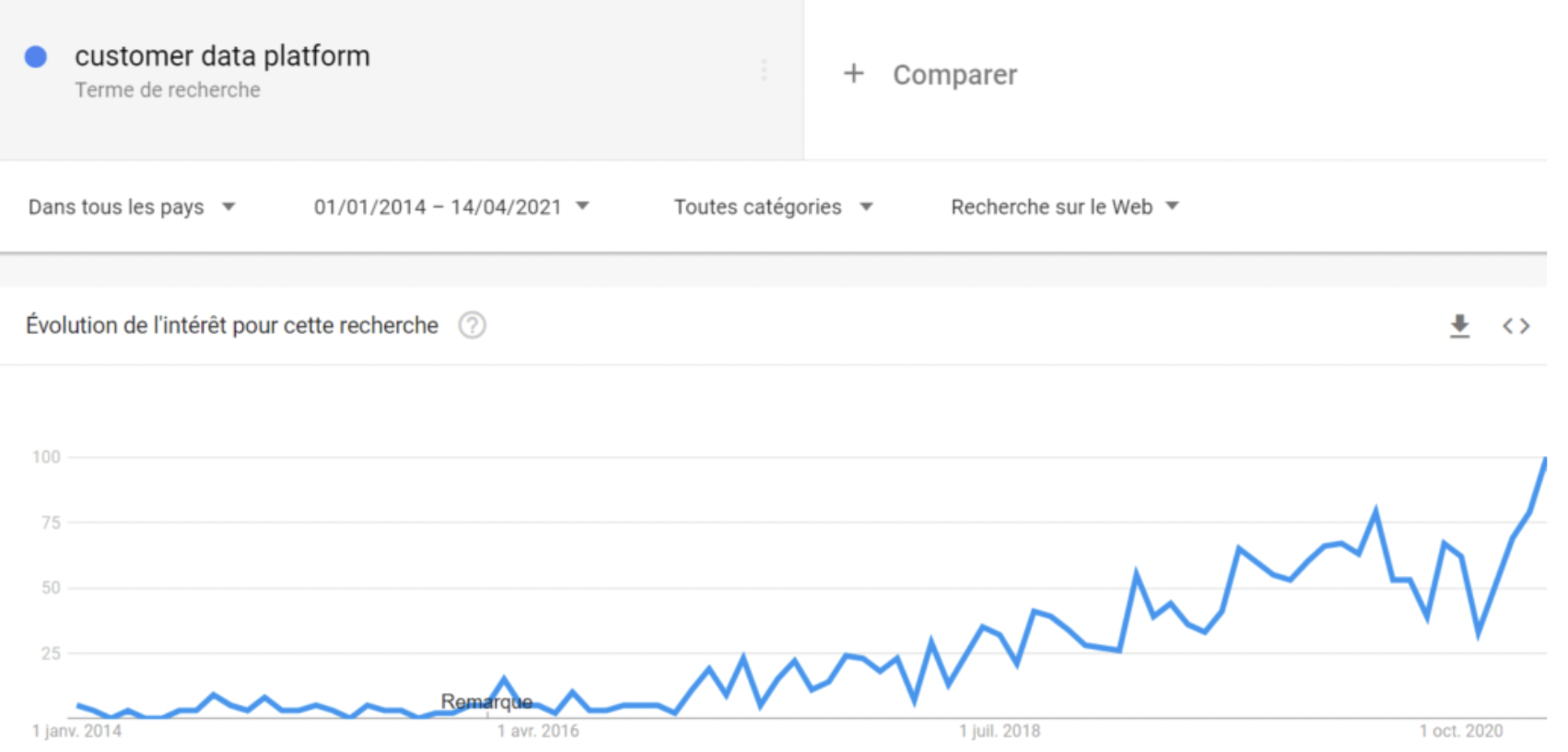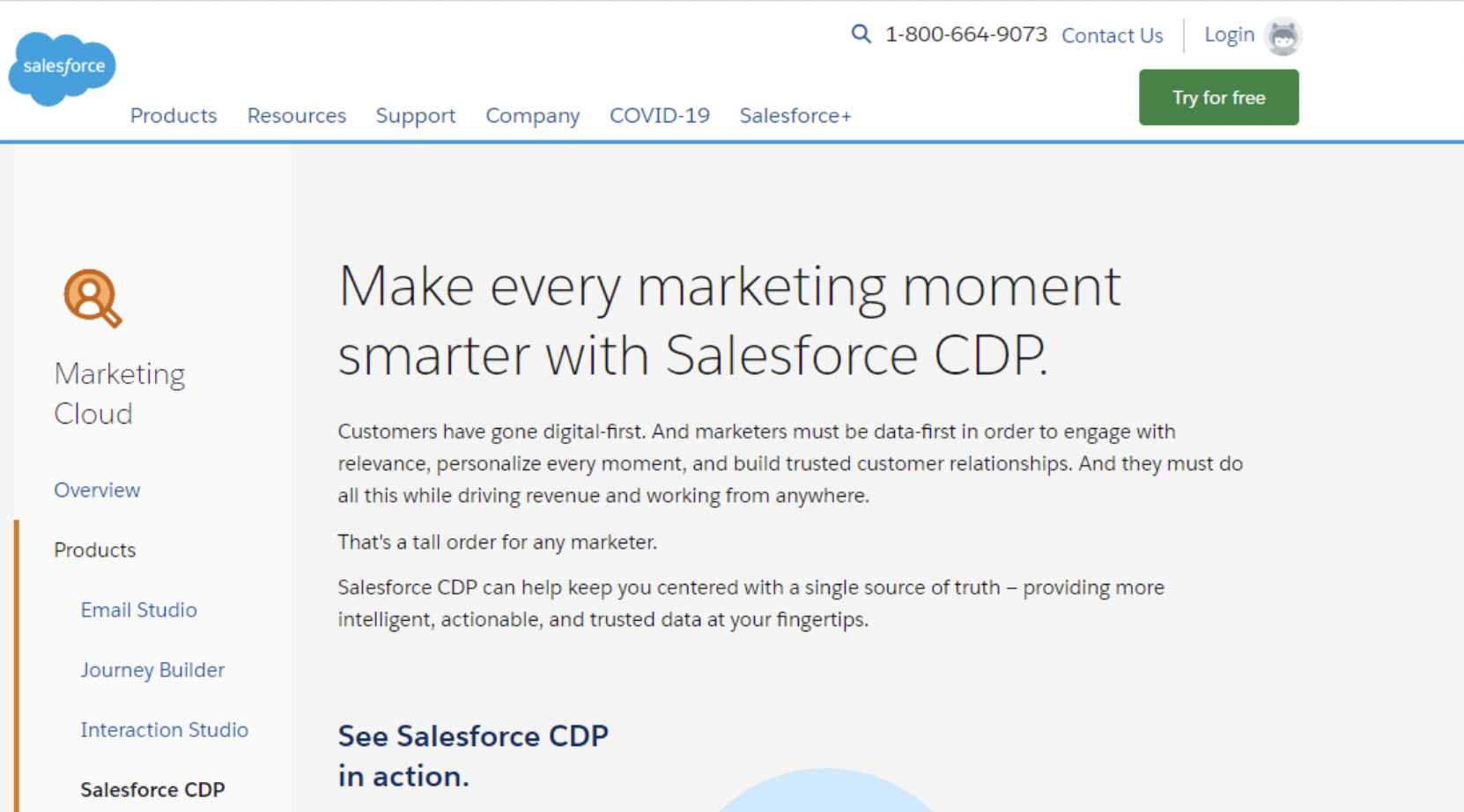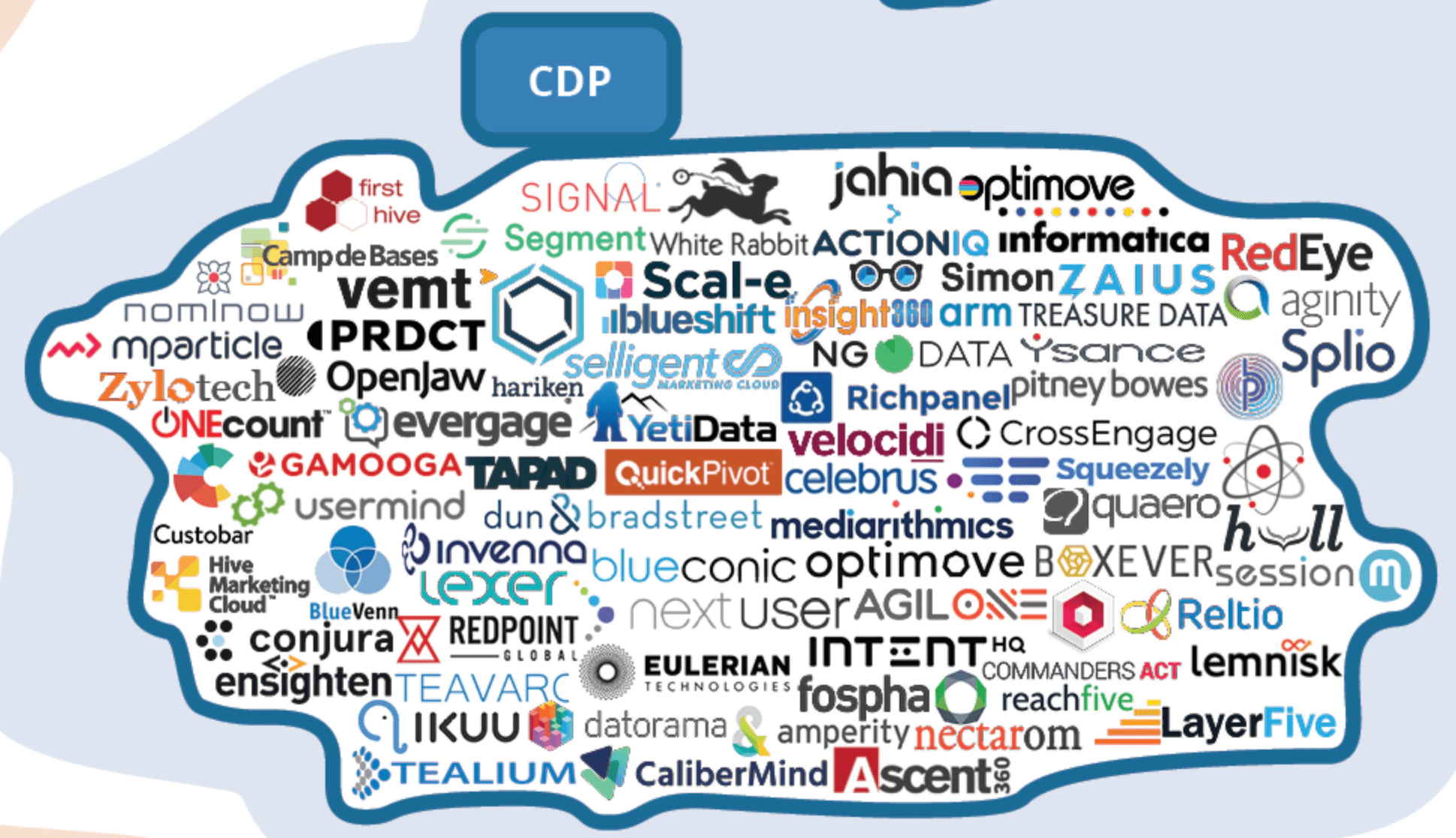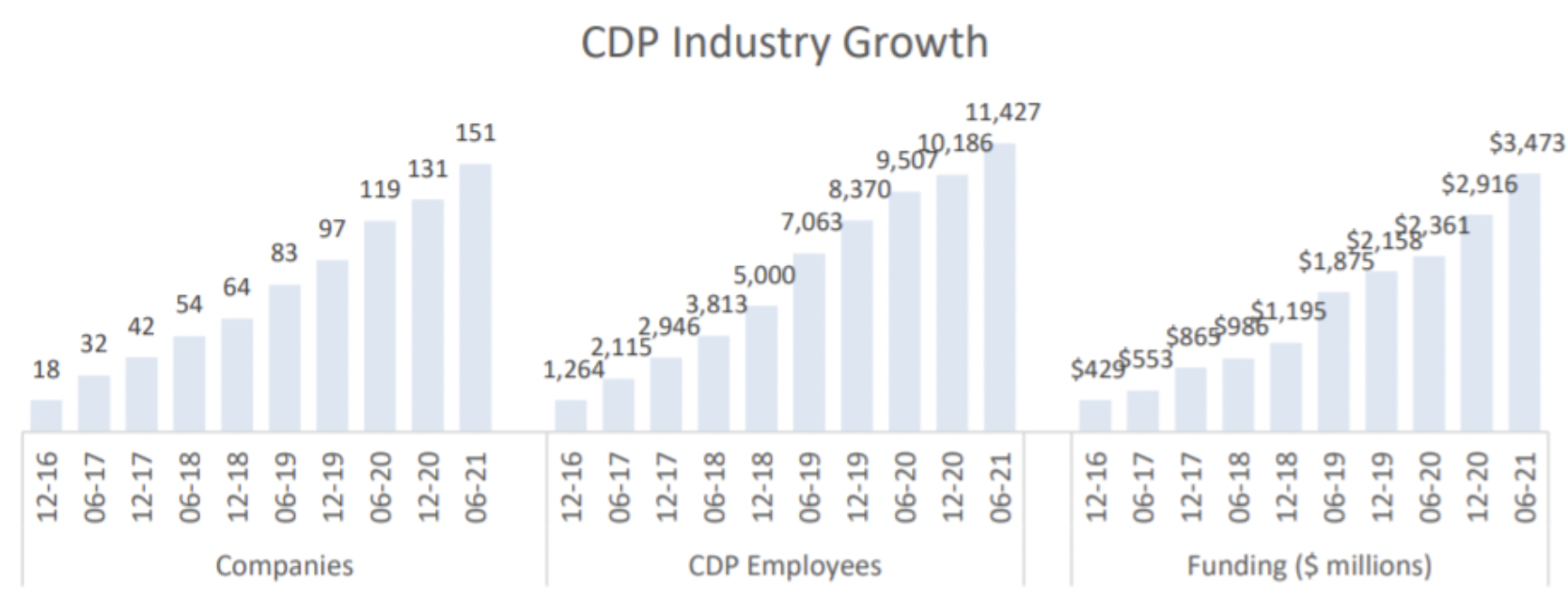Customer Data Platforms or CDPs are very popular these days. The term “CDP” designates different things: “pure player” solutions, CRM, and Marketing tools that have skilfully taken up the term.
There’s probably a trend around the expression “CDP,” but this surface agitation hides a real underlying movement. More than ever, businesses should better leverage customer data to improve marketing and sales performance.
Off-the-shelf CDP solutions aren’t the only approaches to address this need. Many companies choose to personalize their customer database.
Contrary to what one might think, the big winners of this fundamental movement will not necessarily be CDP software publishers or CRM solutions but rather the major Cloud platforms.
🚀 The Rise of Customer Data Platforms
A Customer Data Platform is an off-the-shelf solution created to organize, unify and transform customer data.
Publishers always put forward the same promises:
This is enough to justify the enthusiasm around this technology.
3 indices of CDP success
CDP is undeniably popular. Several indices prove this:

A simple fashion effect?
Sure, there is a fad, but as we said initially, it’s about the expression “CDP.” The drivers of this trend are very solid. The primary reason for CDP’s popularity is its capacity to respond to problems that are only growing:
CDP’s promises recalled above seem to respond to all these problems and needs directly. Logically, CDP appears as the ideal solution, and its popularity increases.
📚 Many possible approaches to building a CDP
Several approaches are possible to build a CDP.
The first is to buy a CDP off the shelf. In this case, you will make your choice in a market of two types of actors: big ones and small ones, behemoths of CRM and pure players.
The other option is to build your custom CDP: the Build approach (vs. the Buy approach).
Big CRM publishers have invaded the CDP market
Almost all CRM giants have launched their CDP offers; it’s a reliable sign. Salesforce, Microsoft, Adobe, SAP, all these behemoths have followed the movement, surfing on the craze for the expression CDP.
These players develop “CDPs” as software bricks attached to the publisher’s CRM ecosystem rather than open platforms. Salesforce CDP, for example, is a brick of Marketing Cloud.

Salesforce’s offer sums up all CDP promises:
The Salesforce CDP landing page is a breviary of CDP promises.
The rise of CDP pure players since 2015
Alongside these dominant players gravitates a whole galaxy of “pure players,” former DMPs or tag managers who have converted to CDPs.

Source: Chiefmartec
One of the latest reports from the CDP Institute gives interesting information on the CDP market and its evolution, including:
So, we’re witnessing a movement of concentration; big ones redeem little ones. Leaders drive market dynamics.

Build vs. Buy
The “big” vs. “small” distinction should not hide the real structuring distinction: Buy vs. Build.
There are two ways to obtain a Customer Data Platform:
The CDP craze has tended to overshadow the second approach. We finally associated the term “CDP” with off-the-shelf solutions.
But things are changing, and tailor-made approaches have become more popular. We’ll soon see why.
How do you choose between these two technological options?
Let’s recall the strengths and weaknesses of each option on the main selection criteria:
Each of the two options (Buy or Build) has advantages and disadvantages. So, making a choice is not easy.
But do we really have to choose between these two options?
Why not combine the best of both worlds?
We’ll present a third approach; hybrid and Data Warehouse first.
The hybrid approach, Data Warehouse first, is soaring
History direction increasingly favors the hybrid approach that involves building the CDP into your Cloud Data Warehouse. Therefore, you can benefit from all the functionalities offered by a modern CDP: many possible integrations, the identity resolution essential to building a Single Repository, etc., while keeping control over the data.
This approach deserves attention.
Why?
For at least 3 reasons. It’s:
🏆 A paradigm shift that will benefit (big) cloud platform publishers more than SaaS publishers
The hybrid approach leads to a paradigm shift. Its main characteristic is the central place of the Data Warehouse Cloud. Actors offering DWH Cloud solutions certainly have a bright future ahead of them. The time when the MarTech market was dominated by an oligopoly made up of Salesforce, Oracle, SAP, and Adobe is almost over.
What if the main MarTech actors became BigQuery (Google), Redshift (Amazon), Azure (Microsoft), or even Snowflake Obviously, they have everything to gain from the development of DWH-first approaches.
Off-the-shelf CDPs are ETLs with a software layer
In the past (but this past is still actual for many organizations), companies used applications that each worked with its database, whether developed by the same or different publishers.
For example, suppose you use Salesforce Marketing Cloud (for marketing), Salesforce Commerce Cloud (for commerce), and Salesforce Service Cloud (for customer service). In that case, you have three independent systems, each with its own database. Your data is not unified.
CDPs emergence is due to scattered data. These CDPs on the shelf are just ETL tools designed to build data pipelines and synchronize data between applications.
They work similarly (Extract – Transform – Load) with the same limits: pipelines are expensive to set up &maintain, and subject to leaks.
Cloud data warehouse solutions have great advantages
And then came cloud platforms, BigQuery, Snowflake, offering a radically different approach. These technologies allow you to build your unified database in the cloud and work like a CDP…without pipelines.
Connecting a data source to your Data Warehouse BigQuery is all about adding the right permissions to your data source’s BigQuery API key.
Connecting data becomes incredibly simple:
The time where tool stacking meant data stacking might soon be a bad memory.
Building your CDP in your Data Warehouse allows you to easily connect your data sources, unify this data and then redistribute it to business applications.
This approach makes it possible to build a “platform” in the strict sense of the term, not a software suite.
Conclusion
A business that wants to get more out of its customer data and a good technology solution should consider the hybrid alternative presented. No, off-the-shelf CDP is not the only option. No, you don’t necessarily have to choose between Buy and 100% Build approaches.
The DWH first approach is growing in popularity to the delight of the major cloud platforms… The three-digit growth of an actor like Snowflake is emblematic of this major development. To be continued!


